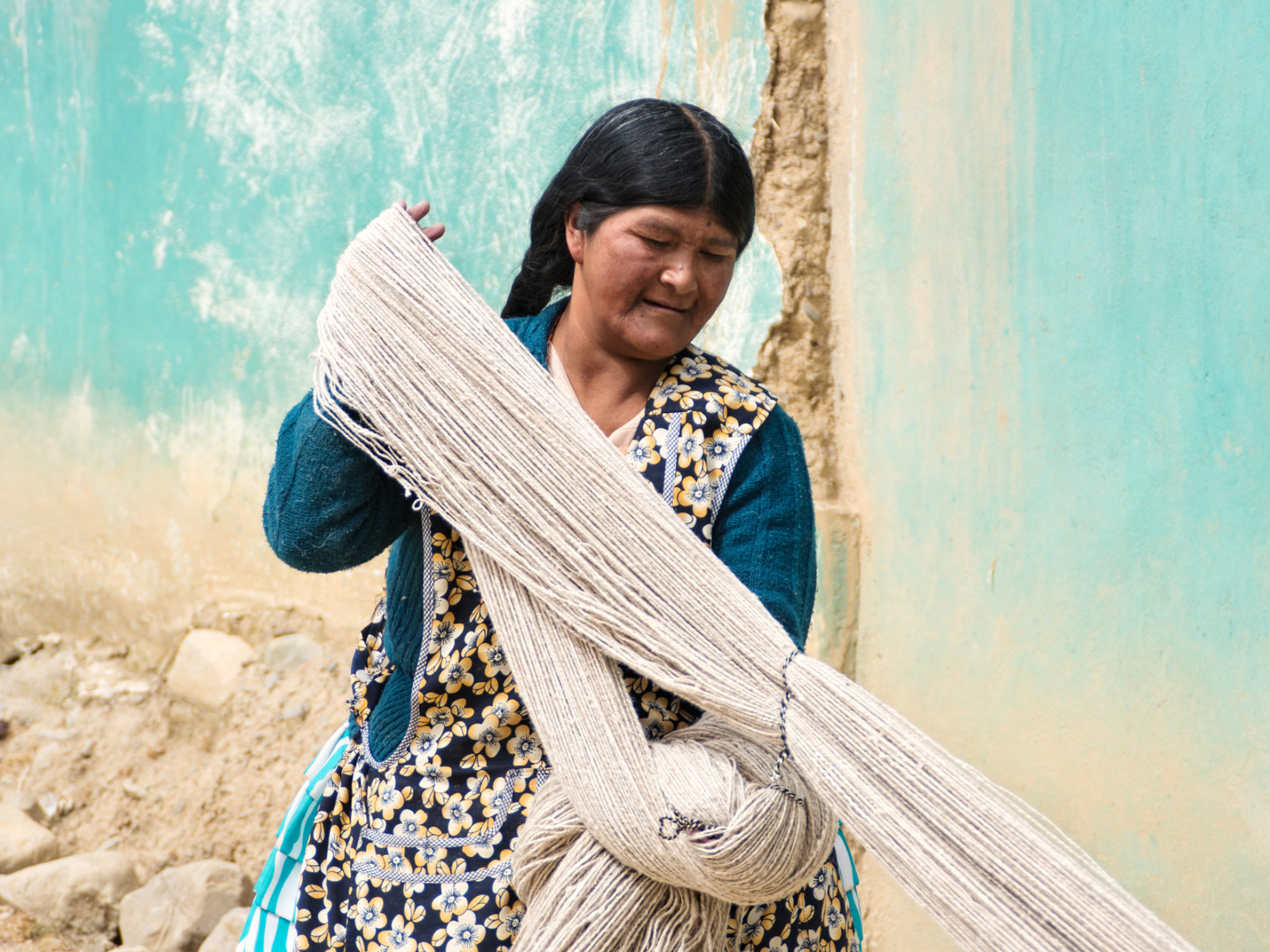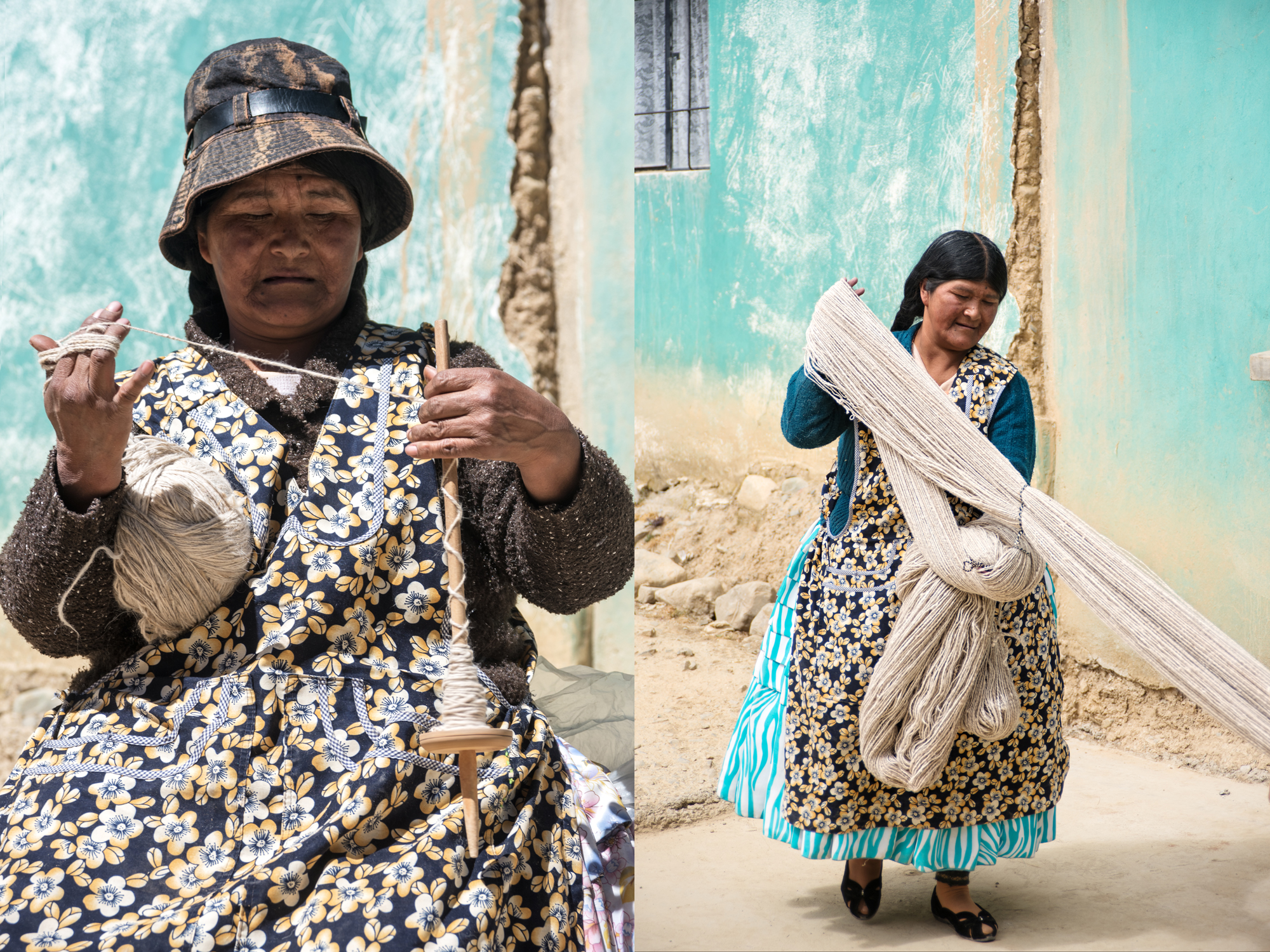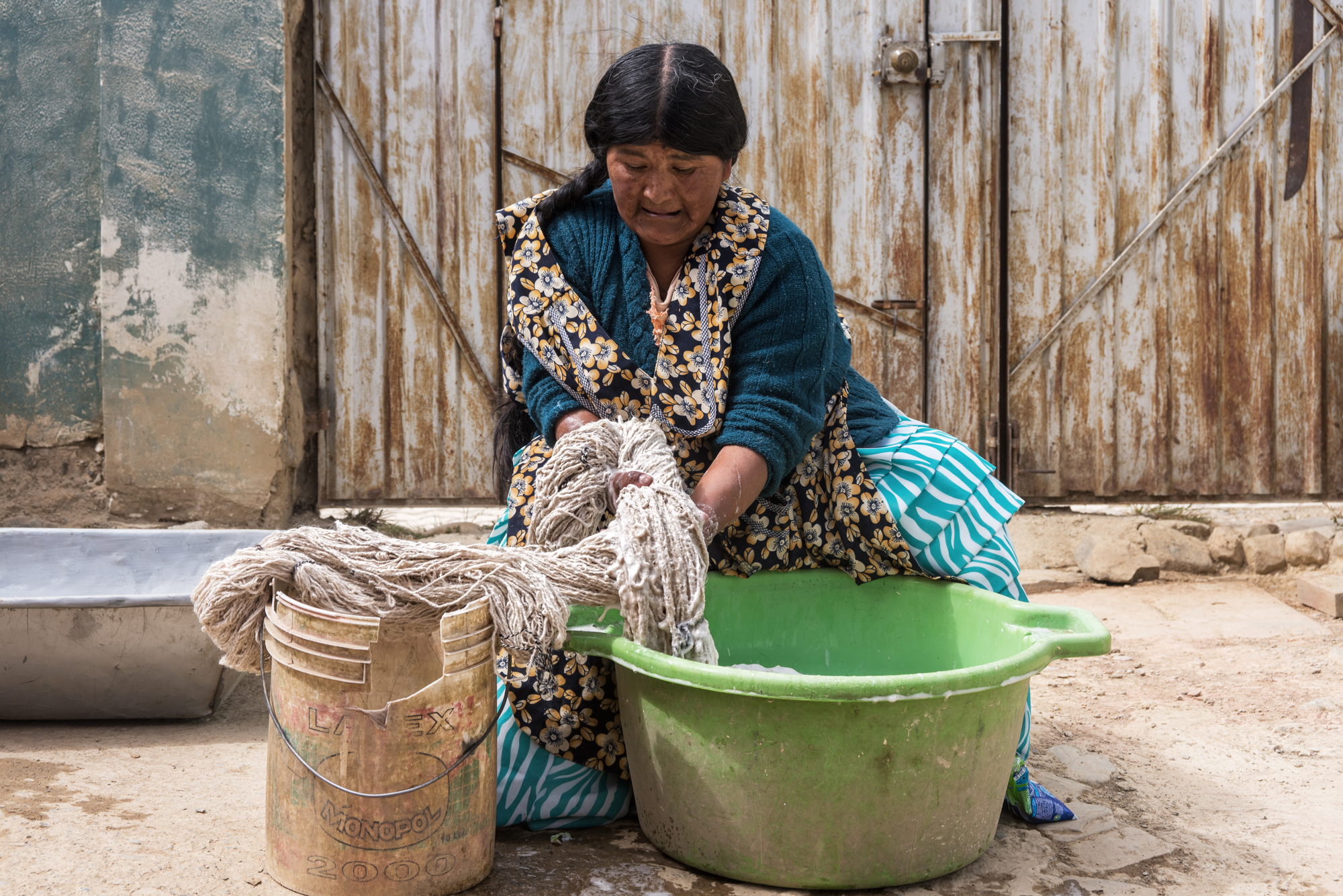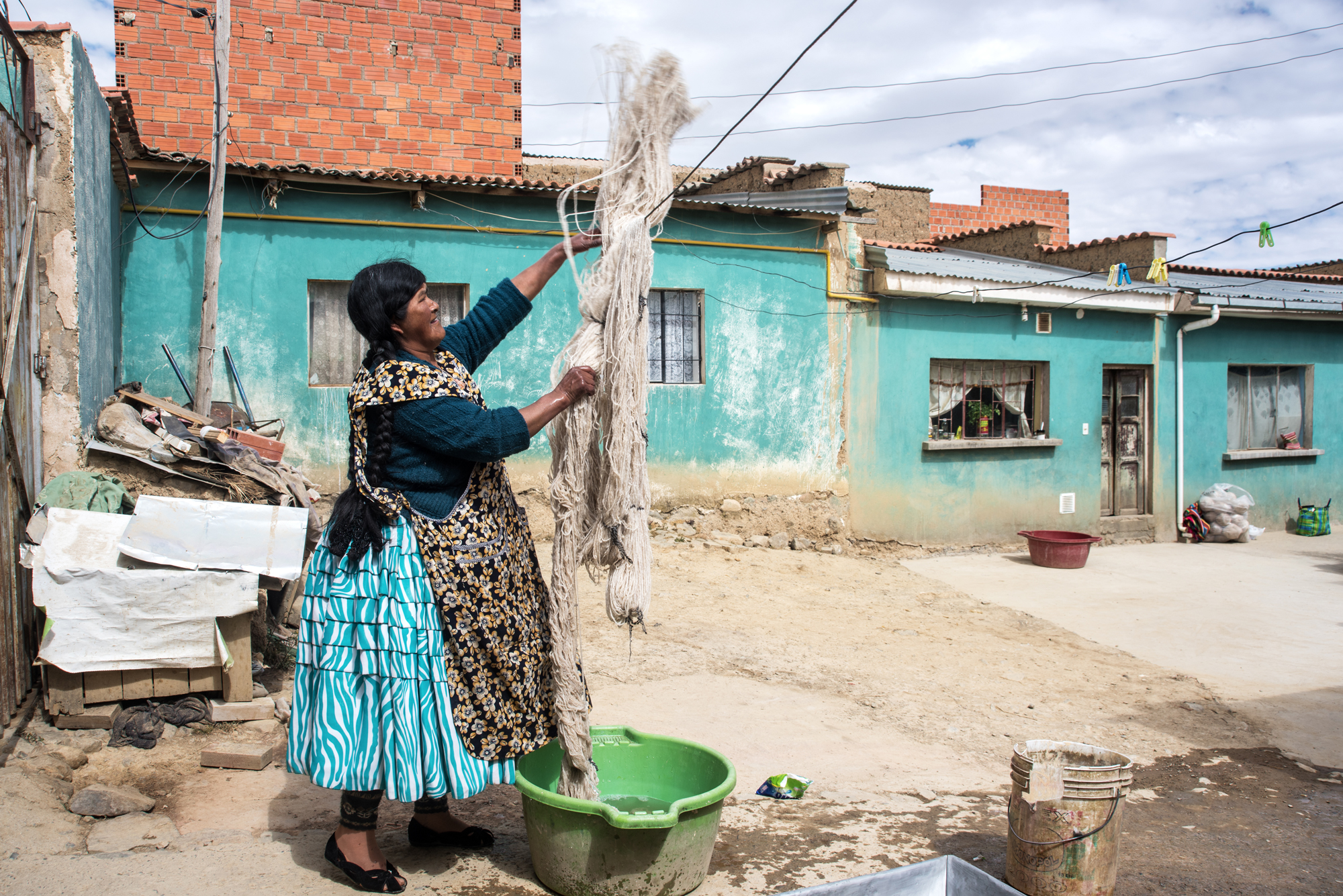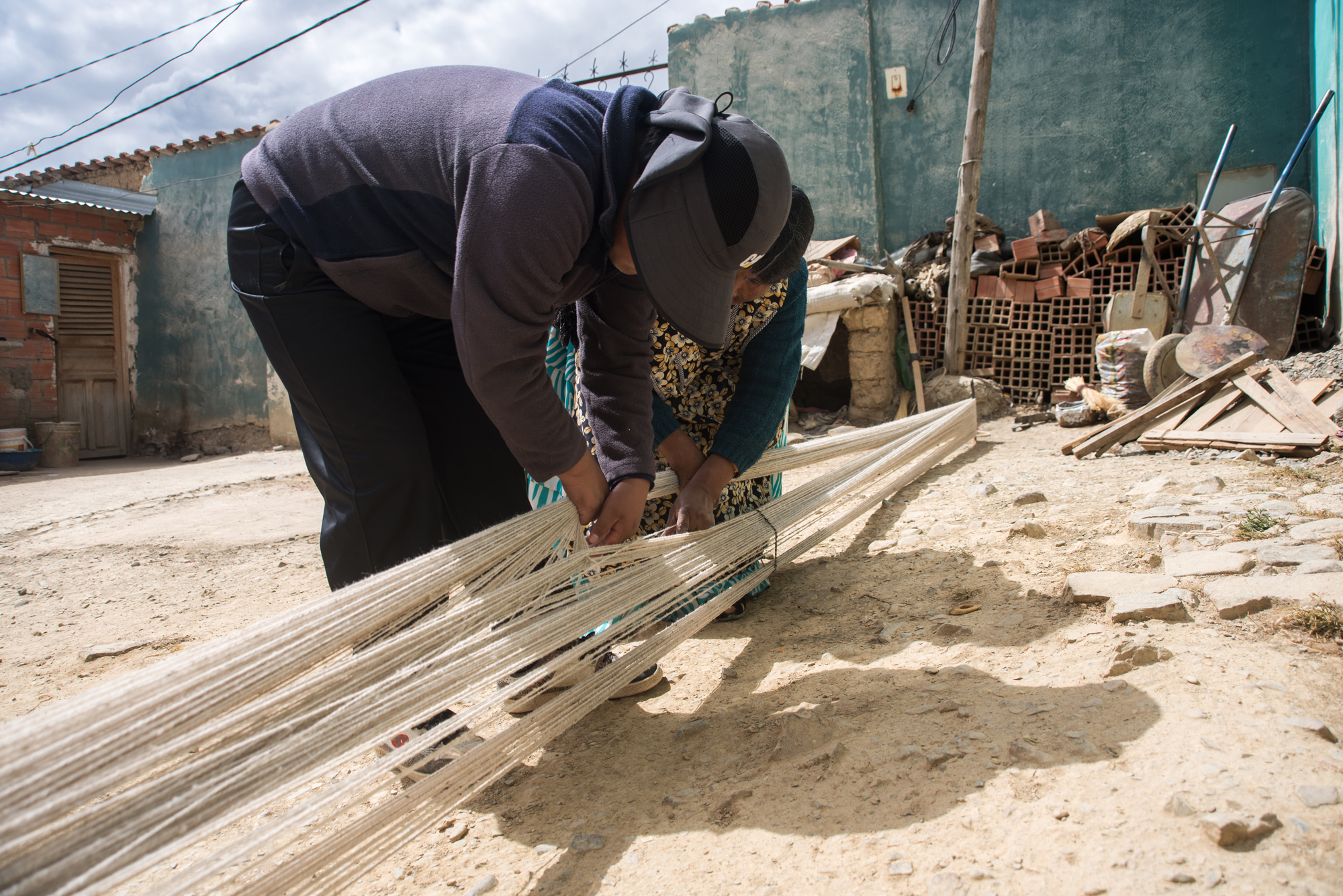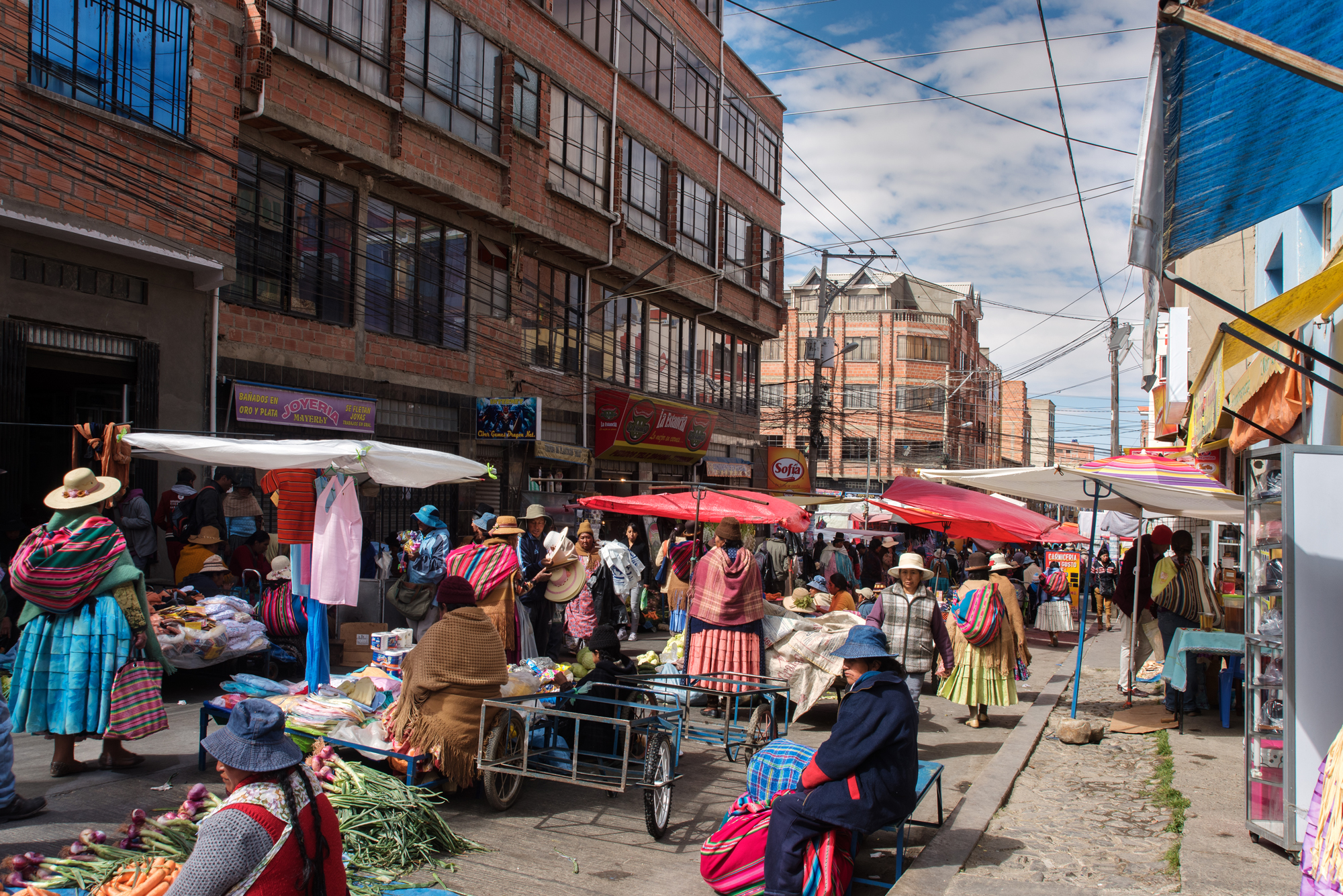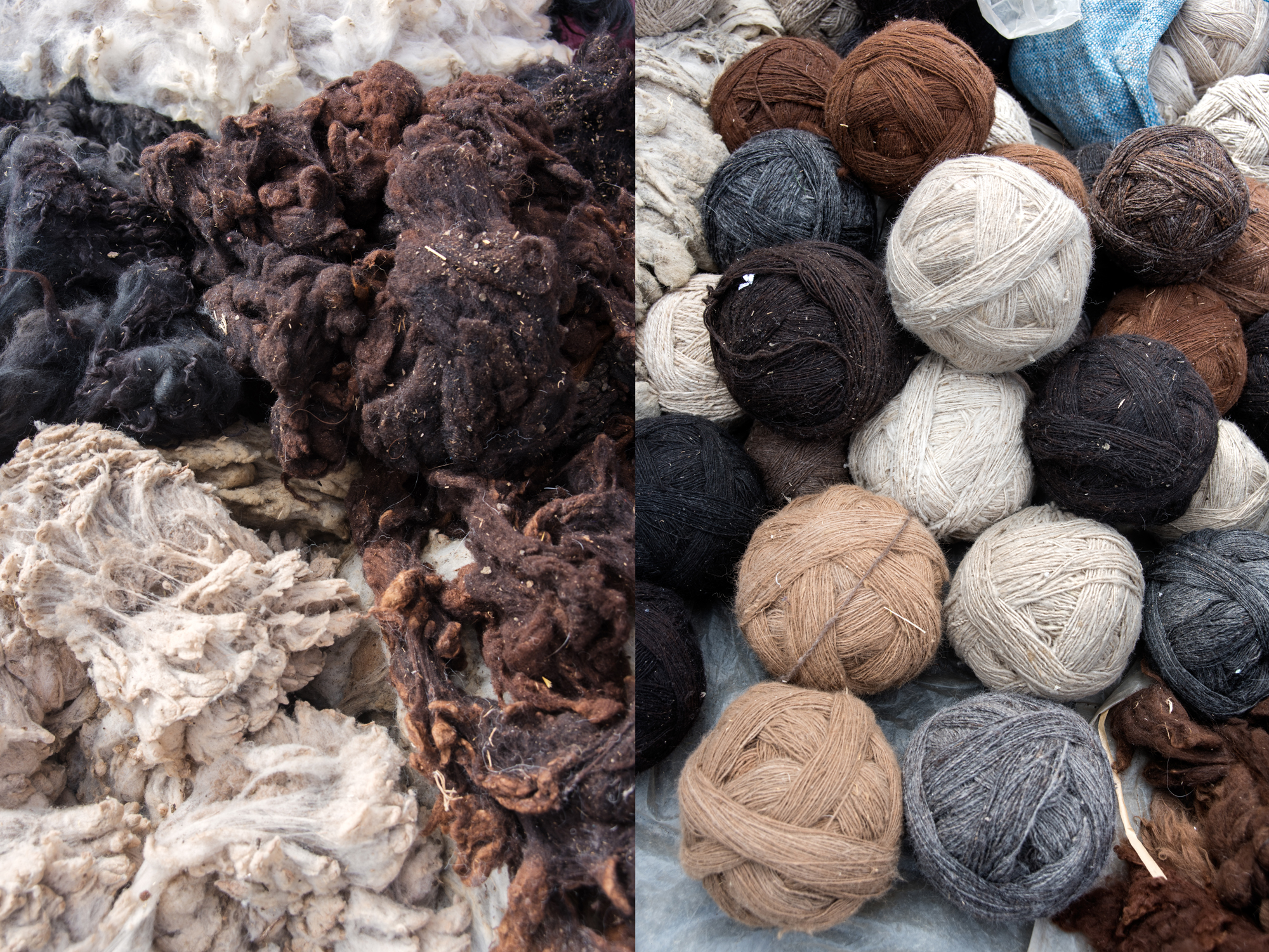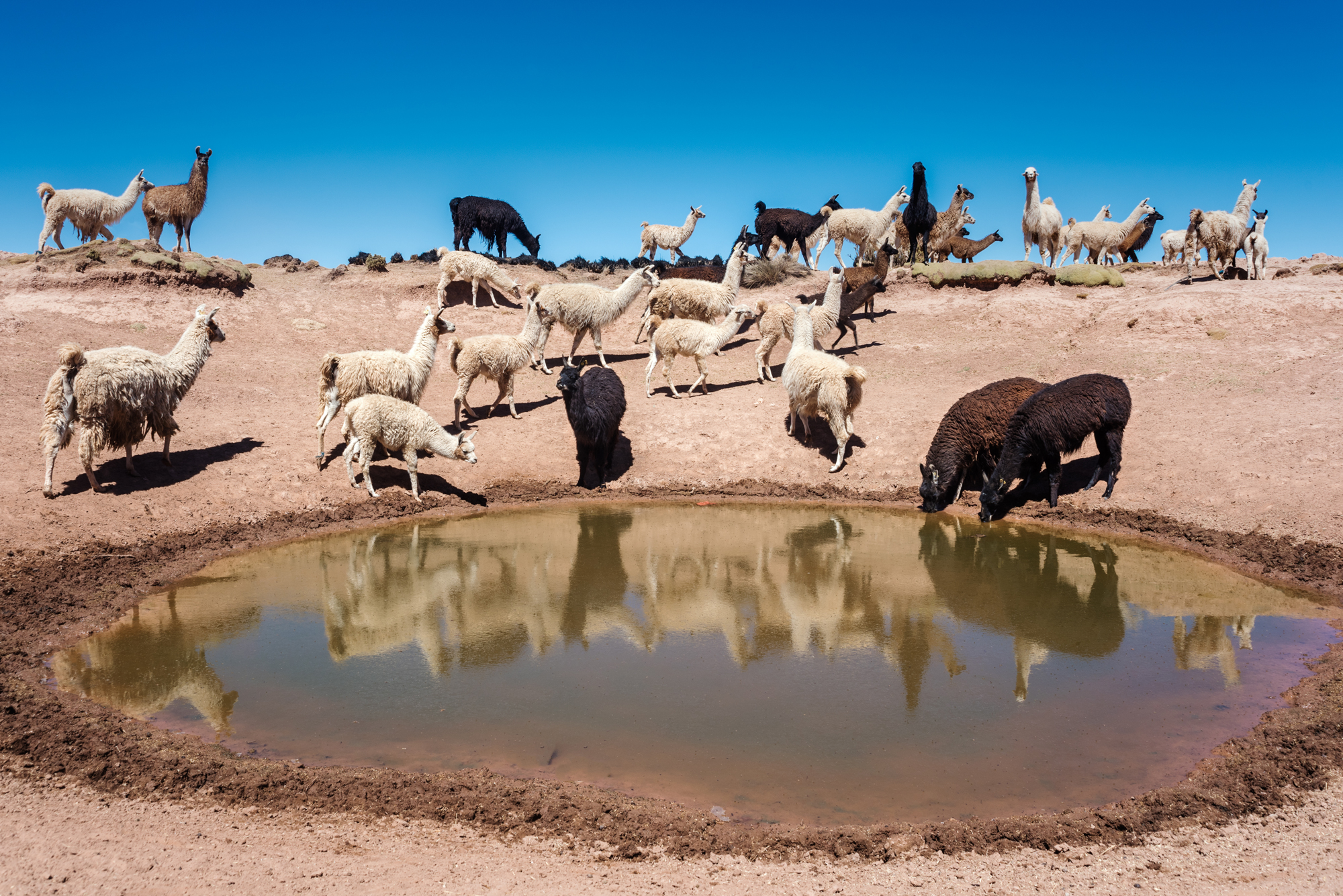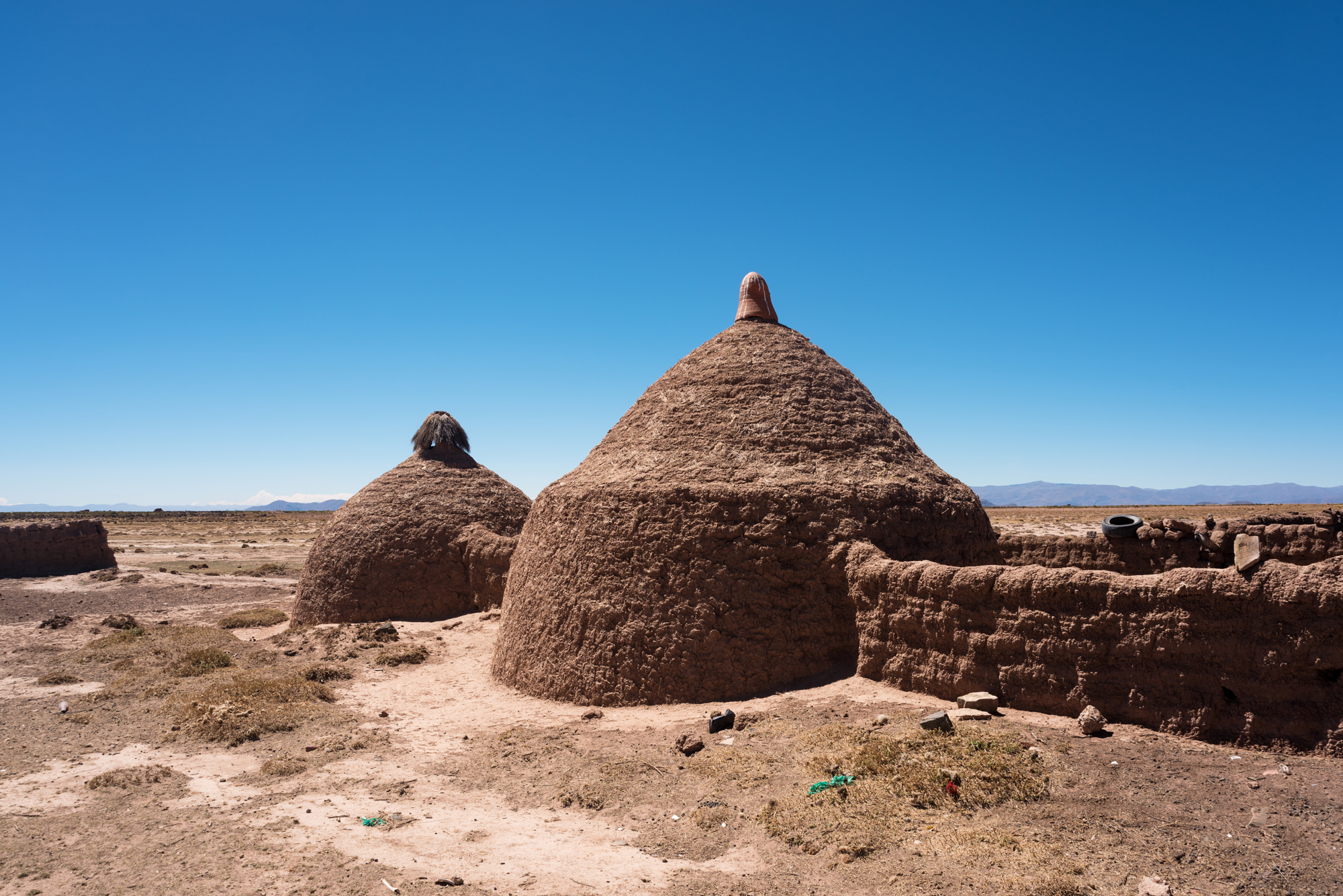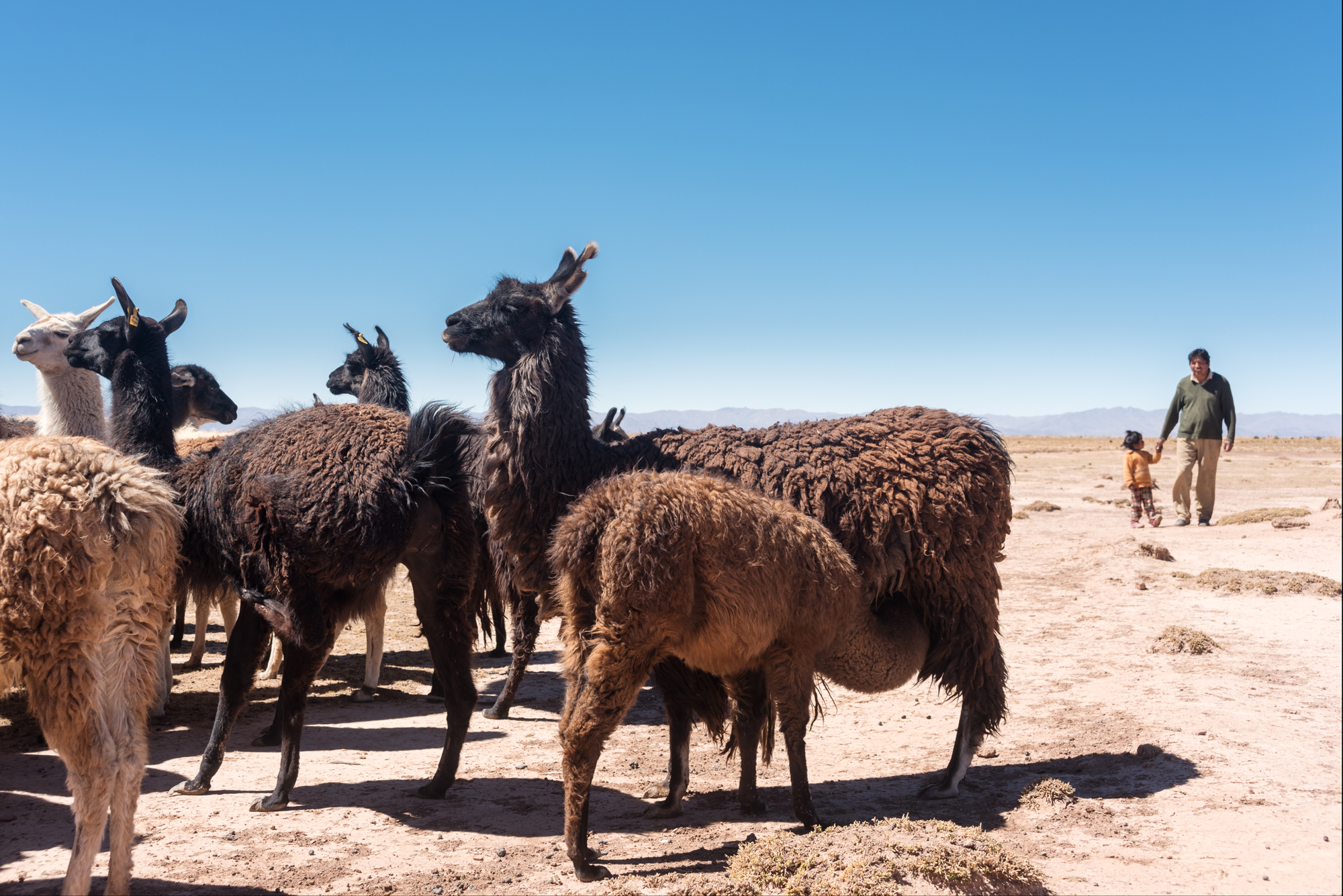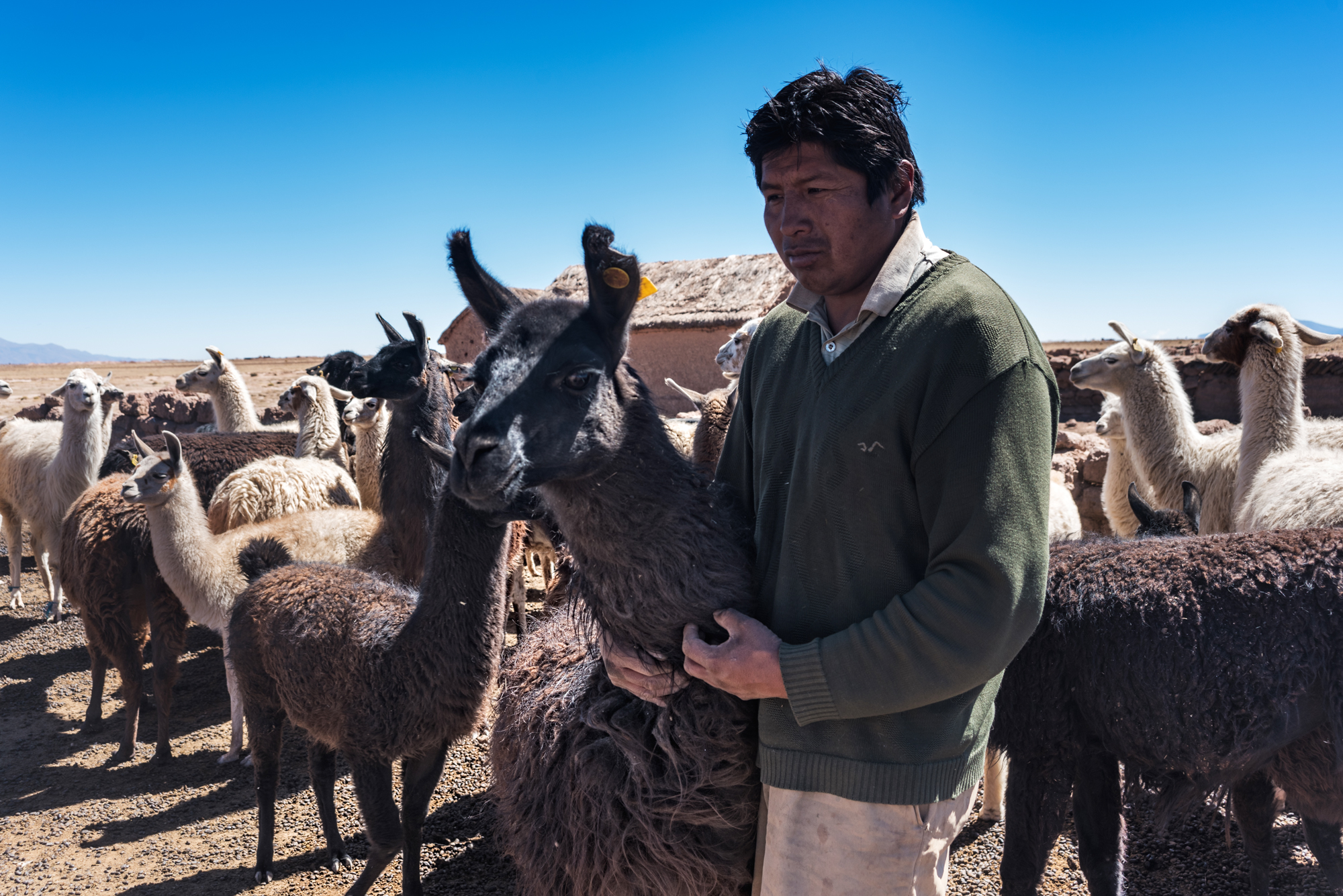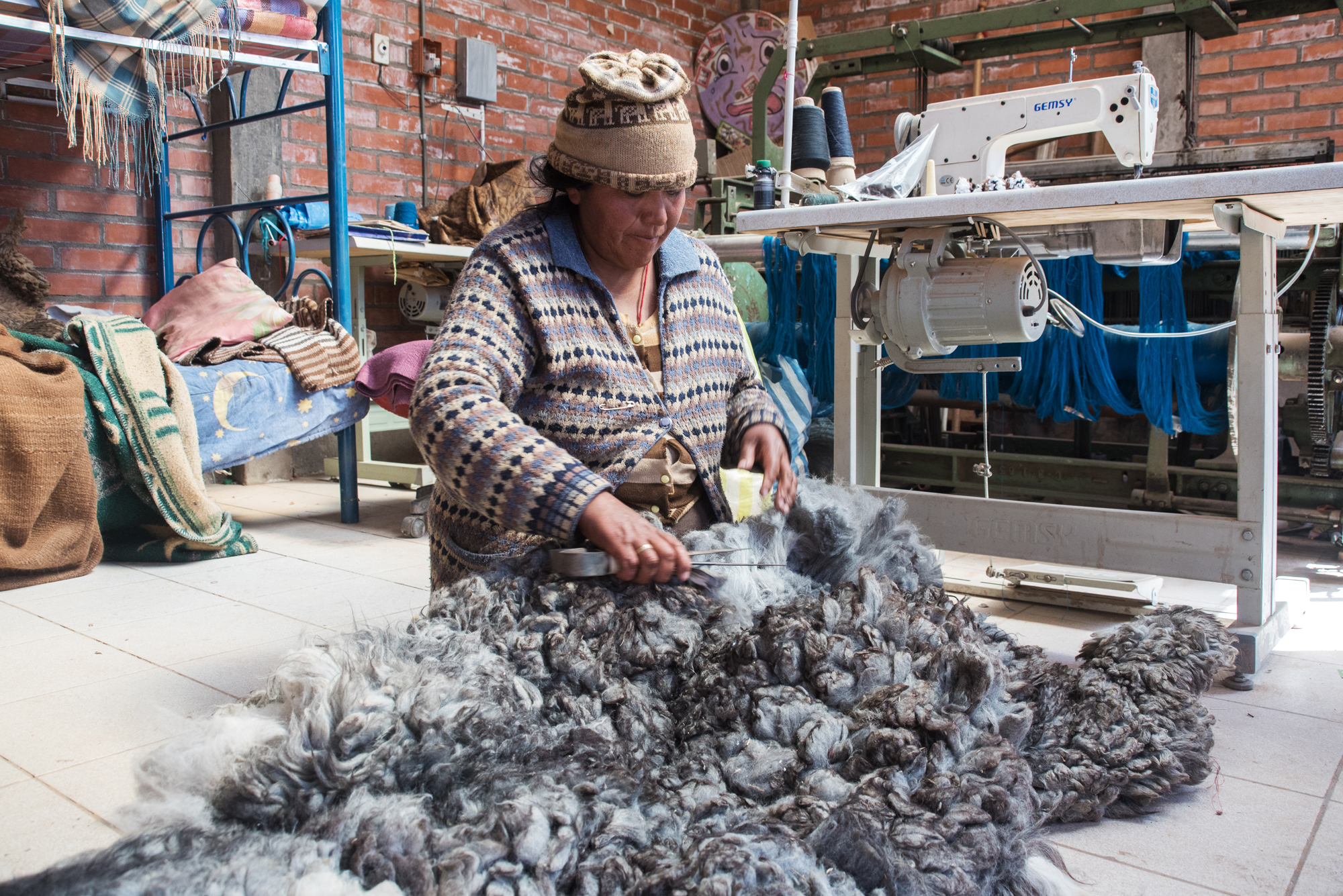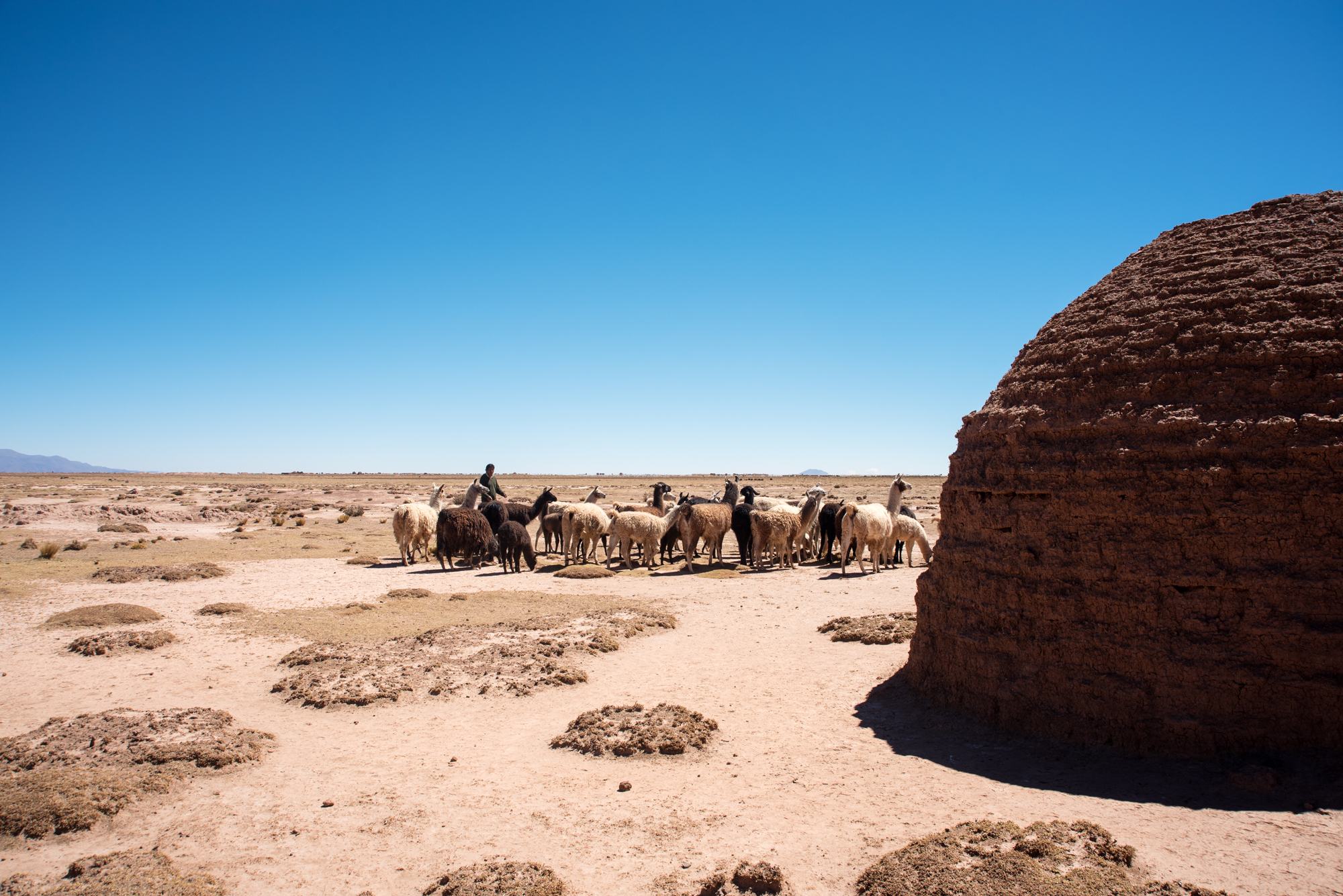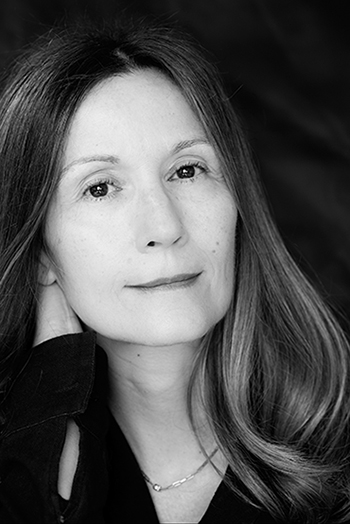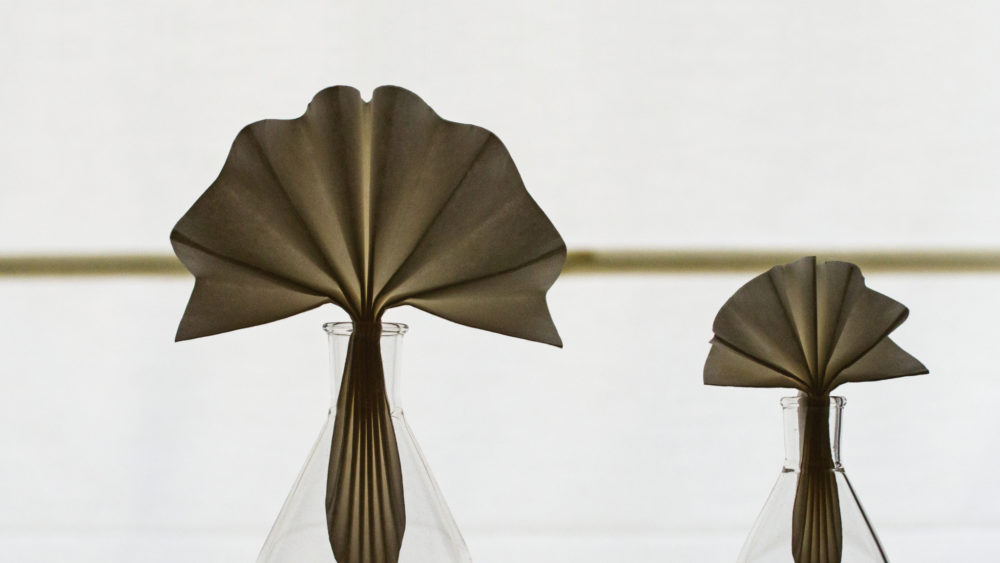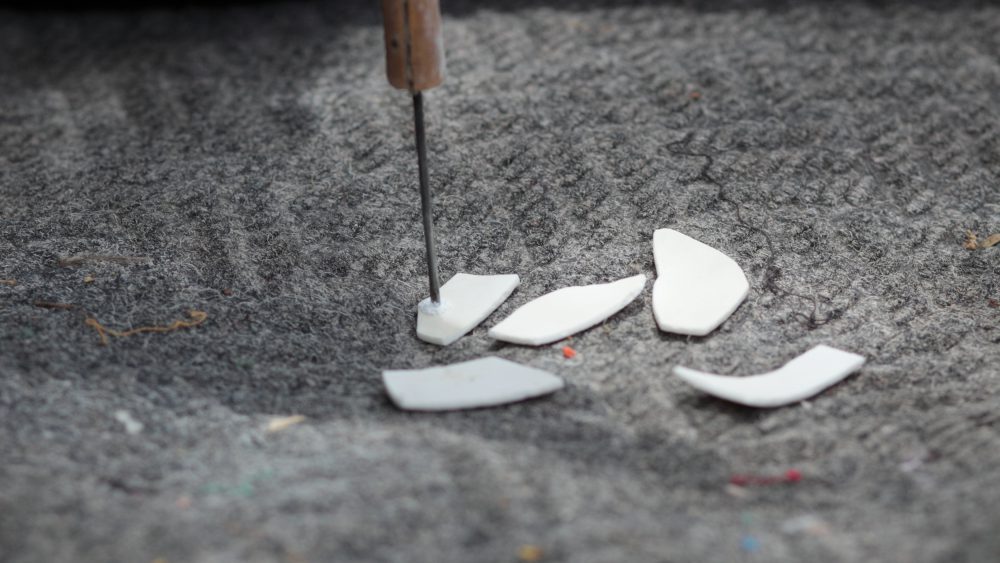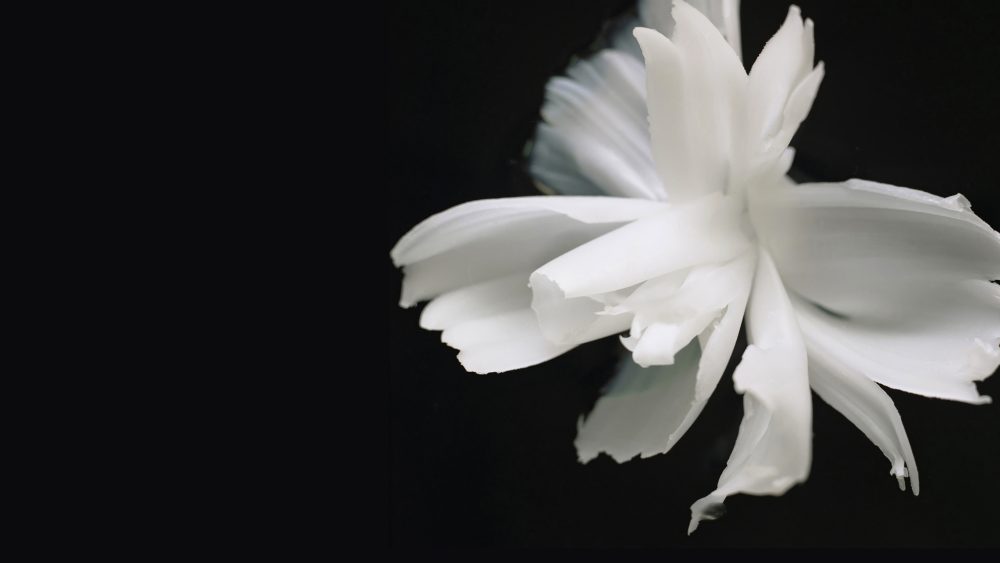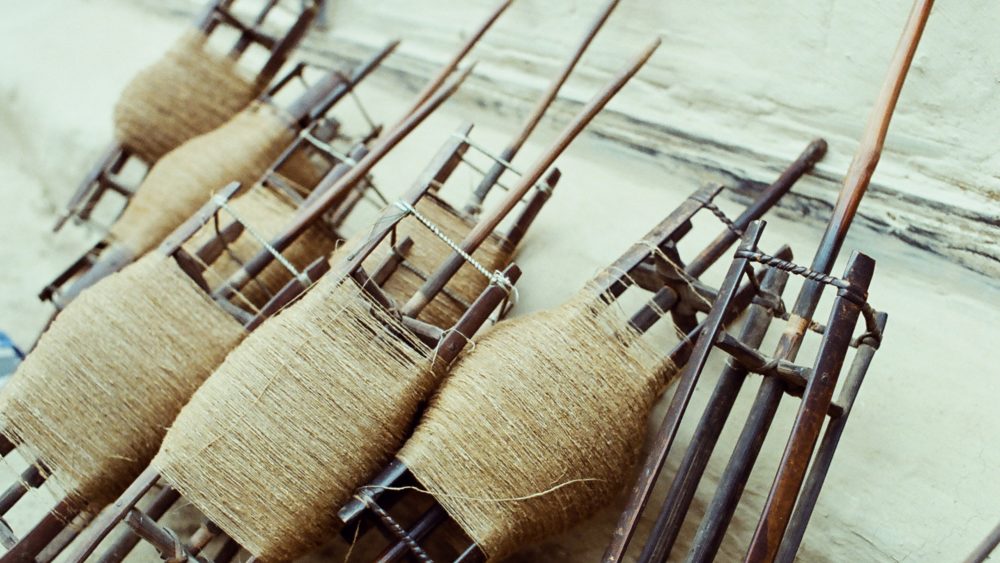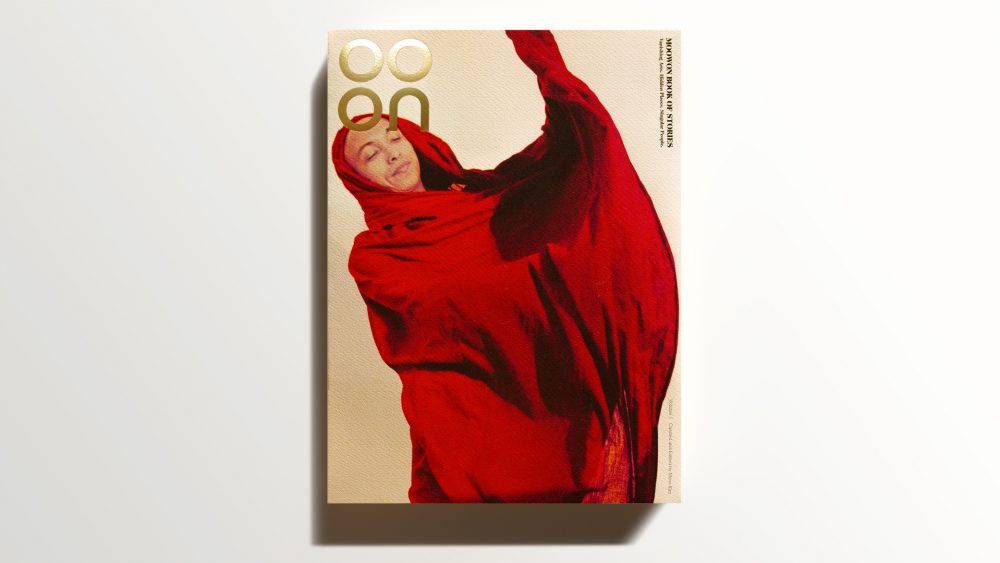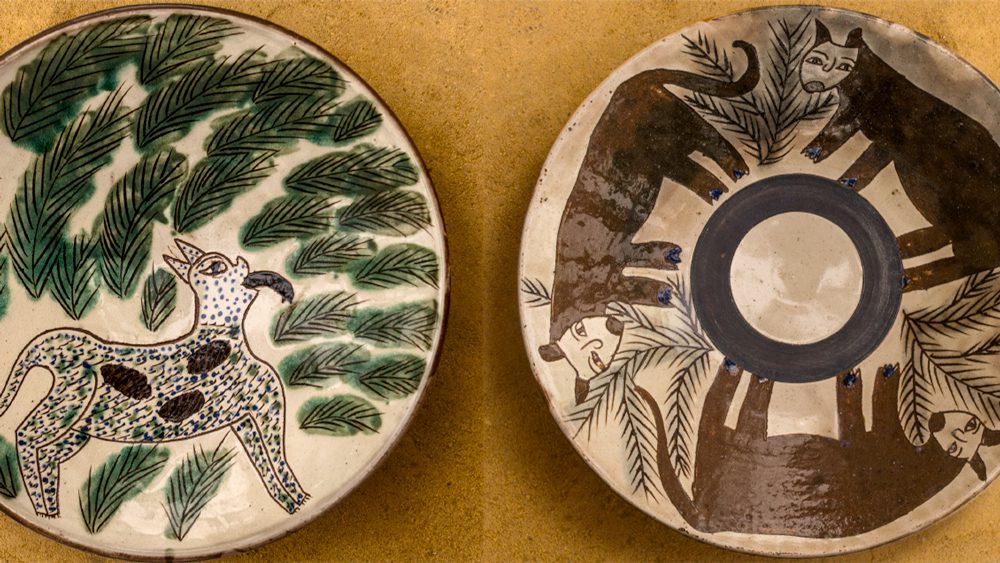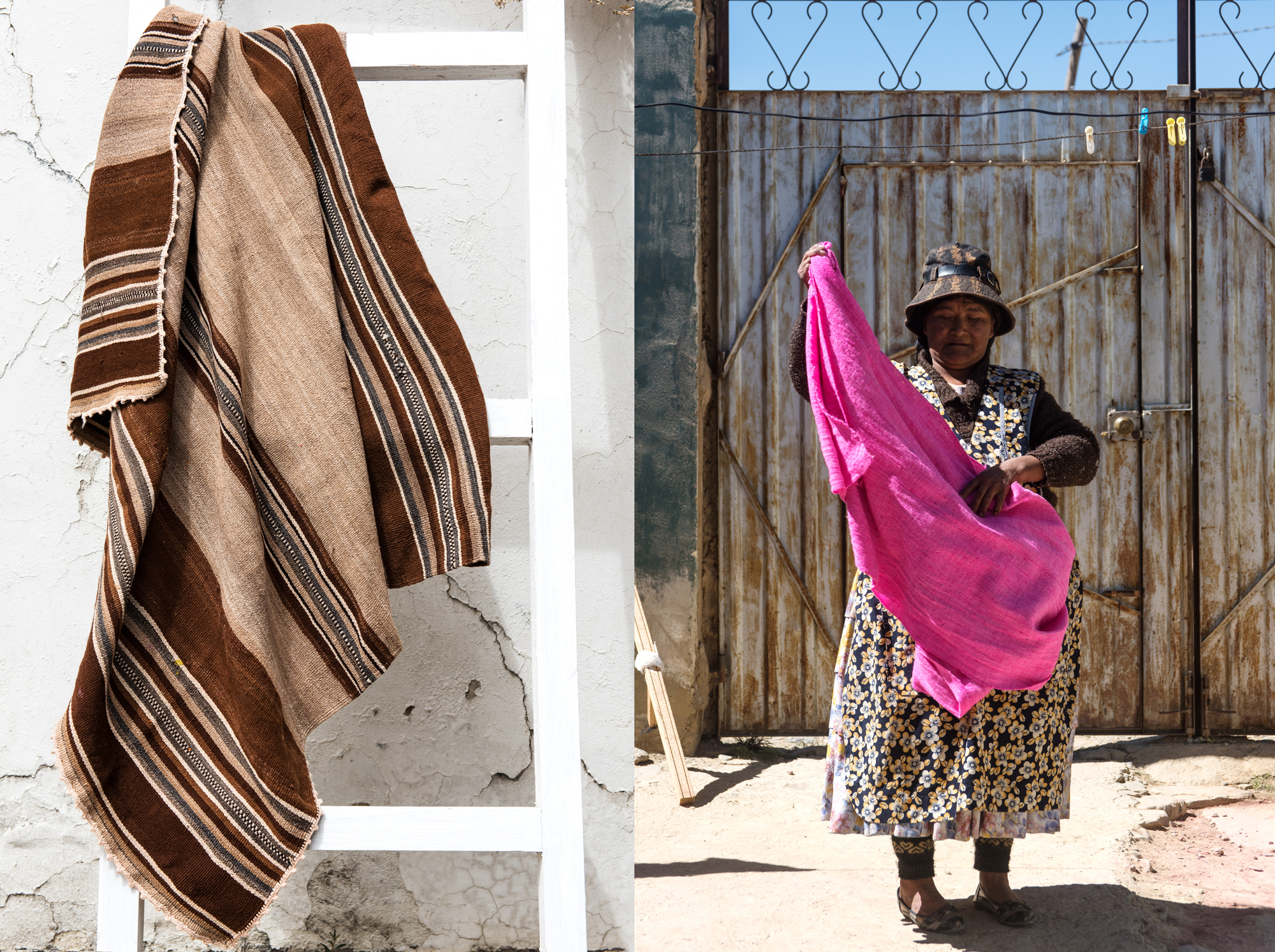
( LEFT ) The traditional aguayo, in addition to its functional use, it is a work of art in itself. It is a multicolored square piece of cloth which is characteristic of the Andean part of Bolivia. It is an indispensable everyday tool that is used as a tablecloth, blanket, or a wrapping cloth commonly used by Andean women to carry their babies and all kinds of items on their backs. Handmaking it with all the symbolic drawings specific to each region takes months of work and requires skill and ancestral know-how. ( RIGHT ) A long piece of Bayeta, a traditional textile handwoven with alpaca and llama wool, has been naturally dyed with cochineal and is drying in the sun. This traditional textile is becoming rare as the weaving techniques are slowly disappearing.
Indigenous Textiles
When searching for genuine indigenous textiles, Véronique Valdès discovered that they were extremely difficult to find. Such was the case for the handwoven bayeta, a coarse woolen fabric of a thin but resistant weave. Originally introduced by the Spanish, it was used by indigenous people to make everyday garments such as women's skirts and jackets and men's pantalones (knee-length pants) and shirts. By 2000, bayeta was silently dying out in Bolivia. Only three families could still weave the rough-looking fabric and there was a yearlong waiting list to get 300 meters of genuine bayeta. Since the presidential election of Evo Morales, indigenous culture has been revitalized and several communities are weaving bayeta again. The annual Oruro Carnival, a major indigenous event that has been listed on Unesco's Representative List of the Intangible Cultural Heritage of Humanity since 2008, plays a key role in its revival. For four days, some 30,000 dancers gather in the otherwise sleepy town of Oruro to celebrate their religious traditions, proudly wearing their indigenous clothes and showing their full artistry.
To enjoy the full story, become a Member.
Already a Member? Log in.
For $50/year,
+ Enjoy full-length members-only stories
+ Unlock all rare stories from the “Moowon Collection”
+ Support our cause in bringing meaningful purpose-driven stories
+ Contribute to those in need (part of your membership fee goes to charities)
EDITING: COPYRIGHT © MOOWON MAGAZINE /MONA KIM PROJECTS LLC. ALL RIGHTS RESERVED.
PHOTOS & TEXT: COPYRIGHT © ANNE LAURE CAMILLERI. ALL RIGHTS RESERVED.
TO ACQUIRE USAGE RIGHTS, PLEASE CONTACT US at HELLO@MOOWON.COM
